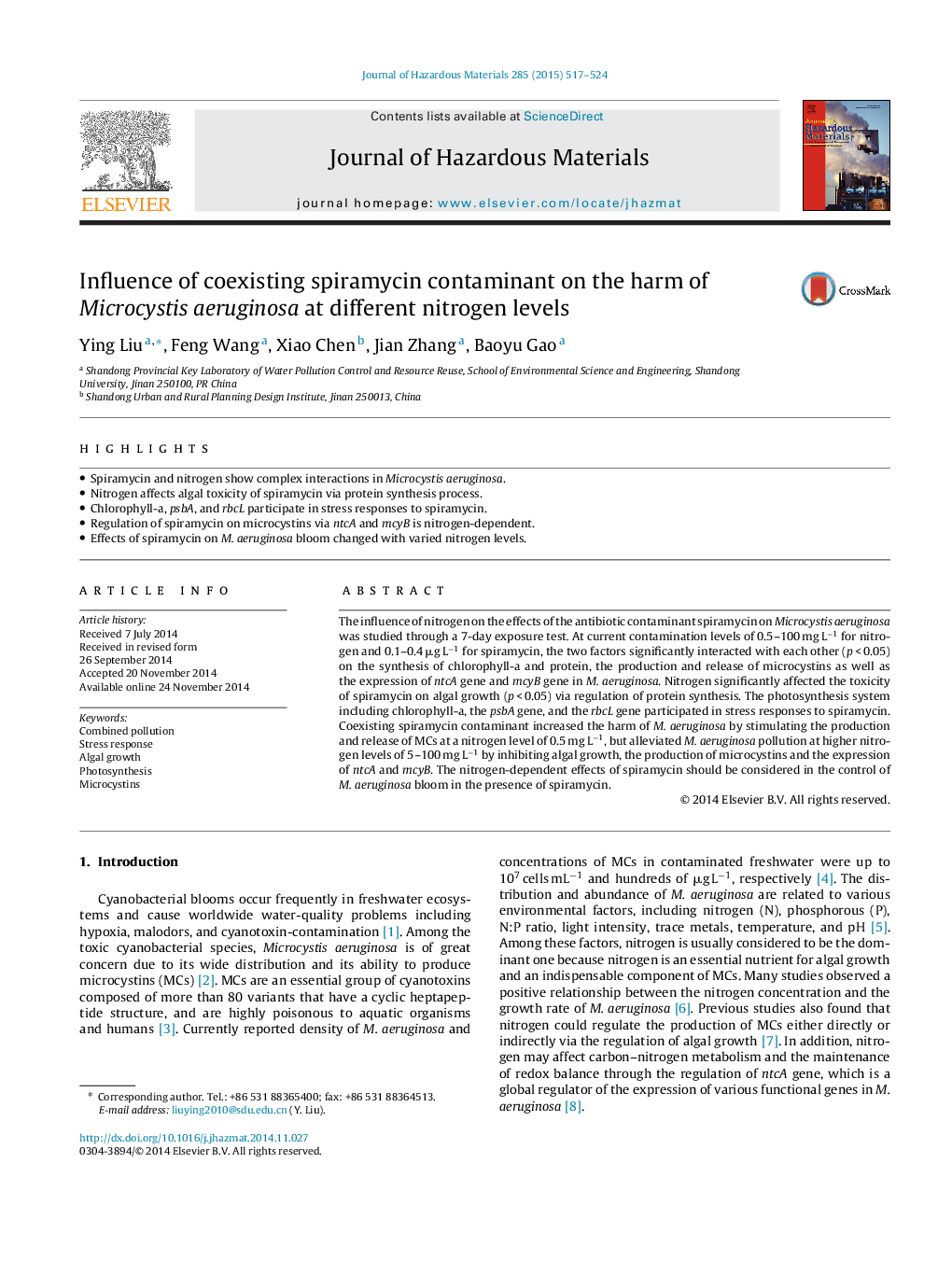| Article ID | Journal | Published Year | Pages | File Type |
|---|---|---|---|---|
| 576467 | Journal of Hazardous Materials | 2015 | 8 Pages |
Abstract
The influence of nitrogen on the effects of the antibiotic contaminant spiramycin on Microcystis aeruginosa was studied through a 7-day exposure test. At current contamination levels of 0.5-100 mg Lâ1 for nitrogen and 0.1-0.4 μg Lâ1 for spiramycin, the two factors significantly interacted with each other (p < 0.05) on the synthesis of chlorophyll-a and protein, the production and release of microcystins as well as the expression of ntcA gene and mcyB gene in M. aeruginosa. Nitrogen significantly affected the toxicity of spiramycin on algal growth (p < 0.05) via regulation of protein synthesis. The photosynthesis system including chlorophyll-a, the psbA gene, and the rbcL gene participated in stress responses to spiramycin. Coexisting spiramycin contaminant increased the harm of M. aeruginosa by stimulating the production and release of MCs at a nitrogen level of 0.5 mg Lâ1, but alleviated M. aeruginosa pollution at higher nitrogen levels of 5-100 mg Lâ1 by inhibiting algal growth, the production of microcystins and the expression of ntcA and mcyB. The nitrogen-dependent effects of spiramycin should be considered in the control of M. aeruginosa bloom in the presence of spiramycin.
Related Topics
Physical Sciences and Engineering
Chemical Engineering
Chemical Health and Safety
Authors
Ying Liu, Feng Wang, Xiao Chen, Jian Zhang, Baoyu Gao,
